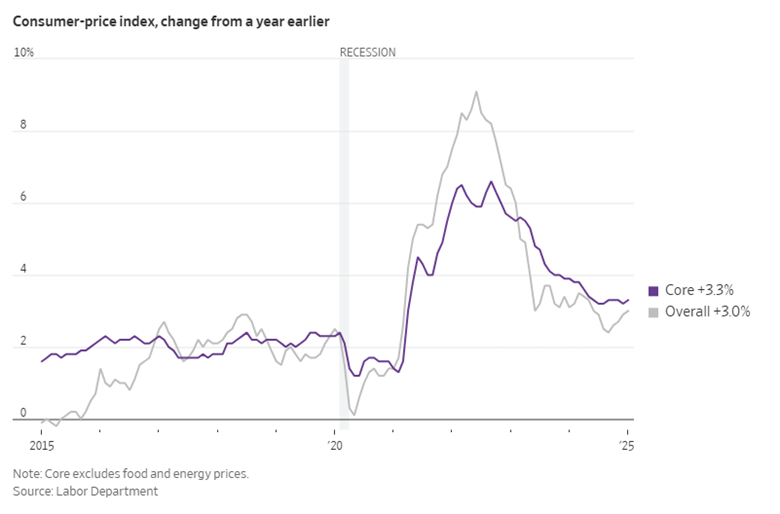Hot Start to 2025
The January Consumer Price Index (CPI) data was released on Wednesday. Although not the Fed’s preferred gauge of inflation (which is the Personal Consumption Expenditure Price Index), CPI is a widely followed metric measured by the Bureau of Labor Statistics.The headline number was a 0.5% increase in prices for the month of January, which topped expectations of a 0.3% month-over-month increase. From the previous 12 months, there was a 3% increase.
A major driver in January was fuel, which rose 6.2%. Fuel can be a volatile component of the index and is often excluded when considering long-term forecasts. The “stickier” components are more meaningful and move slower. In the chart below, this is represented by the core index versus the overall index.

This chart visually represents a theme we’ve discussed frequently over the last two years. The first fight, driving inflation off nearly 10% highs in 2022, was going to be the easy part. The final part of the battle, getting inflation from 4% to 2%, was always going to be more of a challenge.
One important component to note is that seasonality is strong in January. It is common for companies to reassess pricing and make increases once we enter a new calendar year.
With this report running hotter than expected, there will be significant emphasis placed on next month’s report. The Fed is unlikely to be in any hurry to continue cutting interest rates based on the recent stall in inflation. Pair this with continued volatility within trade policy and it is easy to see why the market has shifted to pricing in just one interest rate cut for 2025.